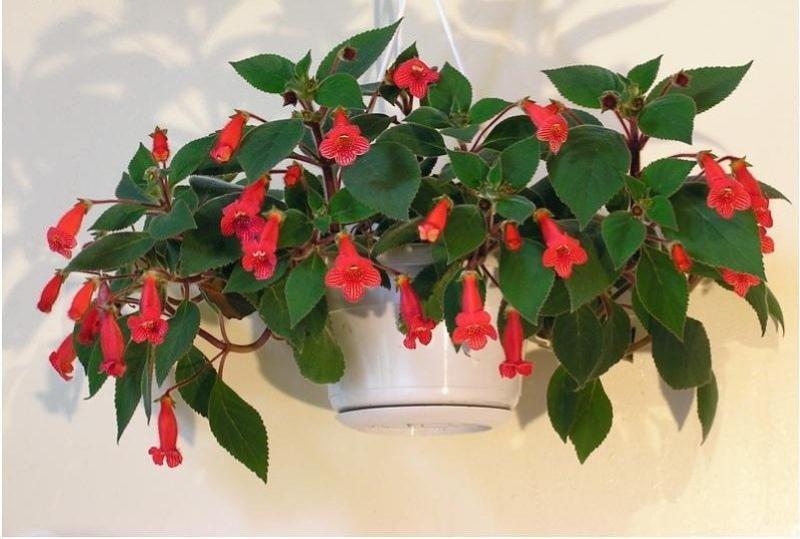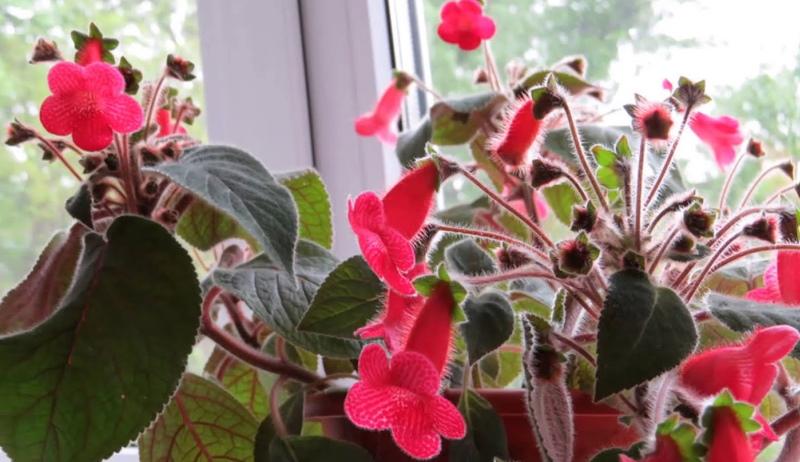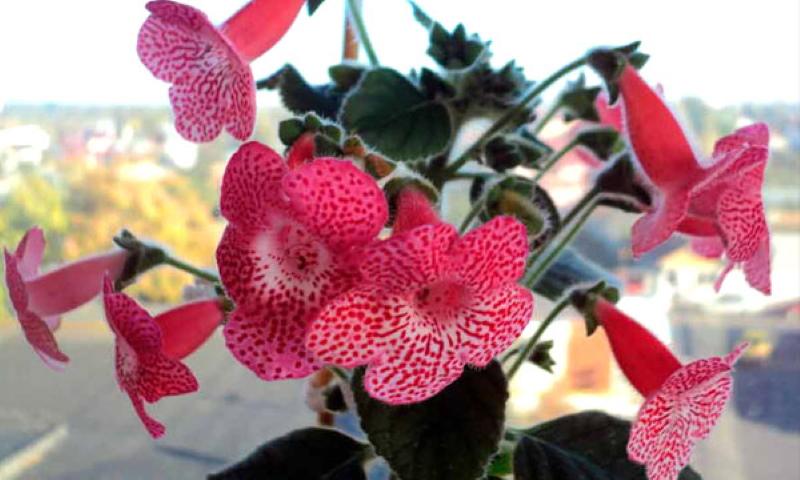Kaleria (photo) - home care for fluffy bells
 Velvet leaves with clearly visible veins are not inferior in beauty to charming multi-colored bell flowers. This is an exotic beauty kaleria (photo), home care for which has its own characteristics. Although there is nothing difficult in growing koleria, as the plant is also called, there is. The main thing is to provide her with tropical conditions at home. And take into account the nuances of the growing season. Subject to all the requirements of culture, it will annually delight with its chic and long flowering. Fortunately, there are many varieties of kaleria, and each has its own color, both of the buds and of the foliage itself.
Velvet leaves with clearly visible veins are not inferior in beauty to charming multi-colored bell flowers. This is an exotic beauty kaleria (photo), home care for which has its own characteristics. Although there is nothing difficult in growing koleria, as the plant is also called, there is. The main thing is to provide her with tropical conditions at home. And take into account the nuances of the growing season. Subject to all the requirements of culture, it will annually delight with its chic and long flowering. Fortunately, there are many varieties of kaleria, and each has its own color, both of the buds and of the foliage itself.
What a flower loves

Coleria needs good lighting in order for many buds to form. Moreover, its soft leaves do not tolerate direct rays. Therefore, the light must be diffused.
 She also does not like the heat: in summer, the bush is comfortable at 22 ° C. And in the fall it completely retires. During this period, the temperature of the content should not exceed 17 ° C heat. The tropicanka also does not like the dry air of the apartment. It is advisable to install a humidifier or drip tray with wet pebbles. Some growers advise to spray the bush frequently. In general, this can be done, but you need to monitor the quality of the water. Often, after such procedures, ugly spots remain on the fleecy foliage. Also, it is impossible for water to get on the buds.
She also does not like the heat: in summer, the bush is comfortable at 22 ° C. And in the fall it completely retires. During this period, the temperature of the content should not exceed 17 ° C heat. The tropicanka also does not like the dry air of the apartment. It is advisable to install a humidifier or drip tray with wet pebbles. Some growers advise to spray the bush frequently. In general, this can be done, but you need to monitor the quality of the water. Often, after such procedures, ugly spots remain on the fleecy foliage. Also, it is impossible for water to get on the buds.
Kaleria (photo) - home care
 Tropikanka prefers loose nutrient soil. It is suitable for the substrate in which violets are grown or gloxinia... Kaleria is growing rapidly and needs an annual transplant. It is carried out after the end of dormancy, in early spring. In this case, it is better to take a flowerpot wider, but not very deep.
Tropikanka prefers loose nutrient soil. It is suitable for the substrate in which violets are grown or gloxinia... Kaleria is growing rapidly and needs an annual transplant. It is carried out after the end of dormancy, in early spring. In this case, it is better to take a flowerpot wider, but not very deep.
Kaleria care consists of the following procedures:
- Moderate, but frequent watering in summer, and scarce in winter, during dormancy.
- Top dressing once a month in spring and summer. You can use mineral complexes for orchids or violets. But the dosage should be reduced by 2 times.
- Formation. Without the intervention of the grower, the color scheme first grows as an erect bush. When the twigs are stretched, under their weight, they themselves lie down, turning the flower into an ampelous form. But you can leave it in the form of a bush, cutting off the tops before flowering.
 After the end of flowering, in September, the bush retires. He needs a cool content with minimal watering. Some varieties even discard the aboveground part, and in the spring they increase it again. After wilting, such species are completely cut on a stump. And they are kept in a room with a temperature of 13 ° C until midwinter.
After the end of flowering, in September, the bush retires. He needs a cool content with minimal watering. Some varieties even discard the aboveground part, and in the spring they increase it again. After wilting, such species are completely cut on a stump. And they are kept in a room with a temperature of 13 ° C until midwinter.